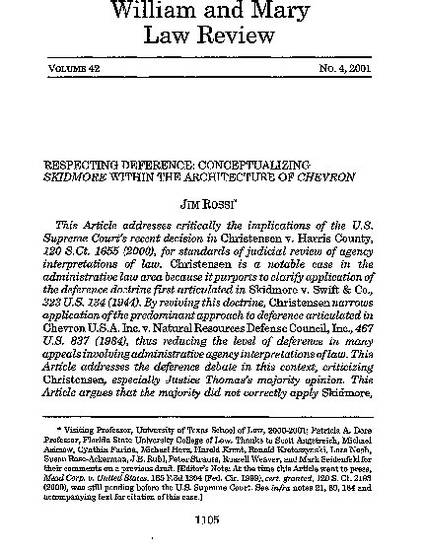
- deference,
- administrative law,
- agency,
- Chevron U.S.A.,
- Inc.
- Administrative Law,
- Agency and
- Law
This Article addresses critically the implications of the U.S. Supreme Court's recent decision in Christensen v. Harris County, 120 S.Ct. 1655 (2000), for standards of judicial review of agency interpretations of law. Christensen is a notable case in the administrative law area because it purports to clarify application of the deference doctrine first articulated in Skidmore v. Swift & Co., 323 U.S. 134 (1944). By reviving this doctrine, the case narrows application of the predominant approach to deference articulated in Chevron, U.S.A., Inc. v. Natural Resources Defense Council, Inc., 467 U.S. 837 (1984), thus reducing the level of deference in many appeals involving administrative agency interpretations of law. This Article addresses the deference debate in this context, criticizing Christensen, especially Justice Thomas' majority opinion. The Article argues that the majority did not properly apply Skidmore, and that the Court's decision invites ad hocery by lower courts in their review of agency legal interpretations. It concludes that conceptualizing Skidmore within the architecture of Chevron's step two -- not as an alternative to the application of Chevron -- will best promote goals of accountability, uniformity, and flexibility.
Available at: http://works.bepress.com/jim-rossi/18/
